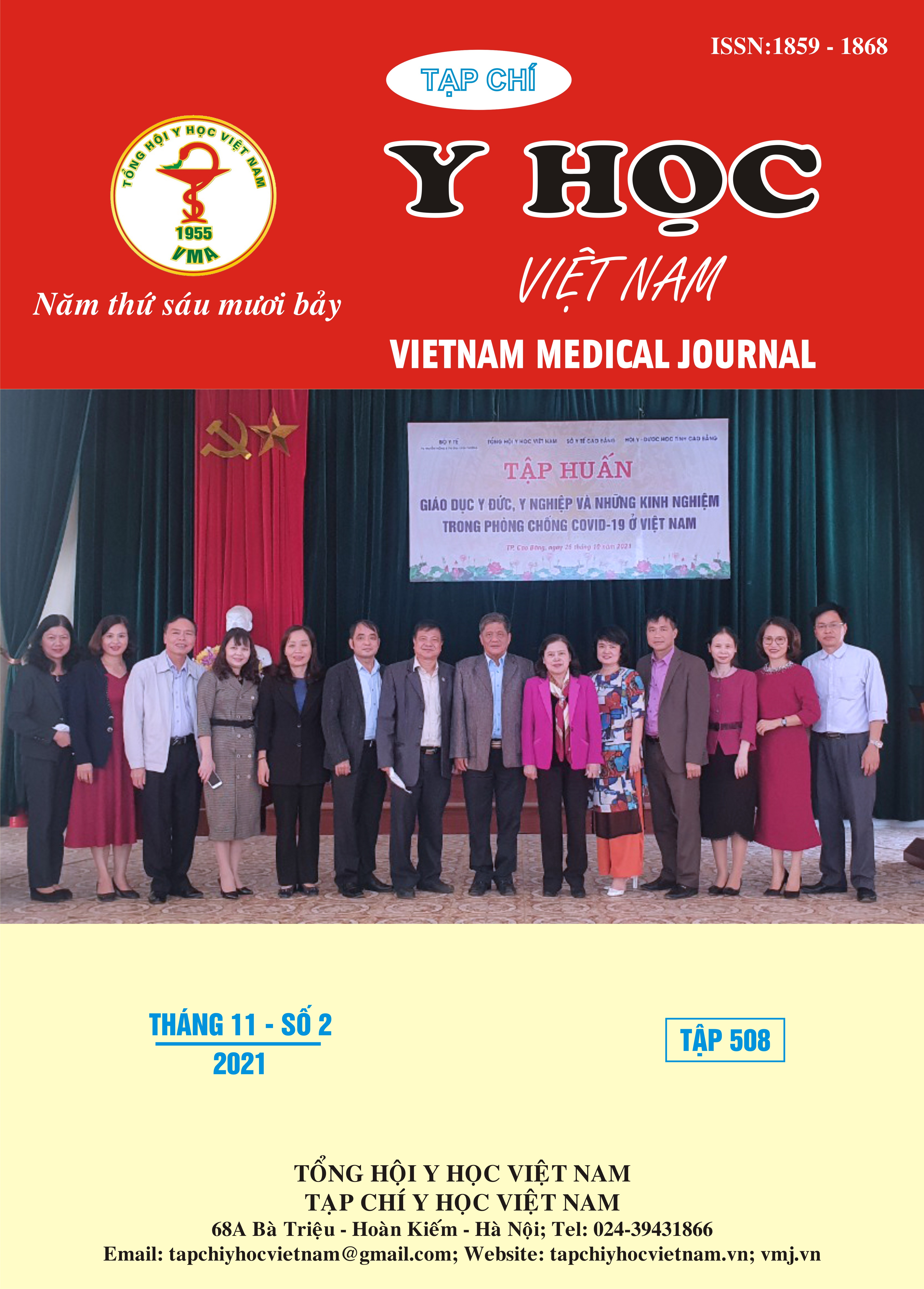DERMATOPHYTES SPECIES ISOLATED AND ANTIFUNGAL SUSCEPTIBILITY RESULTS IN OUTPATIENTS AT HO CHI MINH DERMATO-VENEROLOGY HOSPITAL, 2021
Main Article Content
Abstract
Background: Dermatophytosis is one of the most commonly seen superficial infections. The emergence of antifungal resistance strains of dermatophytes has evoked concerns about available antifungal treatments, whereas antifungal susceptibility testing of dermatophytes is not as frequently performed as antibiotic susceptibility testing. Objective: To isolate dermatophytes, identify to species level, evaluate the distribution of dermatophytes species isolated from outpatients at HCM Dermato-Venereology Hospital, as well as describe antifungal susceptibility testing features of these species. Methods: This is a cross-sectinal study in samples of skin, nail, and hair from outpatients at HCM Dermato-Venerology Hospital, from January to May 2021. These patients are suspected to have superficial fungal infections and appointed to skin scrapings. Samples are inoculated on both Dermatophyte test medium (DTM) and Sabouraud agar (without cycloheximide) to recover and identify the fungi. Subsequently, antifungal susceptibility testings are performed on these isolated species by disk diffusion method with fluconazole, griseofulvin, itraconazole, and ketoconazole. Results: Our study included 339 patients with the clinical diagnosis of dermatophytes infections. We reported the general prevalence of dermatophytosis was 47,2%. Among 107 isolated dermatophytes species, Trichophyton rubrum had the highest proportion of 63,55%, following by Trichophyton mentagrophytes (28,04%), Microsporum gypseum (4,67%), and lastly, Microsporum canis (3,74%). All the dermatophytes showed sensitive results to itraconazole (100%), while griseofulvin reached 98%. In the case of ketoconazole, we found 52,9% of dermatophytes were sensitive to ketoconazole; there were also 30,4% resistant to ketoconazole. Conclusion: Dermatophytosis is still high in prevalence; Trichophyton rubrum is still the most commonly isolated species. Antifungal susceptibility result suggests an increasing resistance to antifungal treatment of dermatophytes, which may reduce treatment effectiveness.
Article Details
Keywords
dermatophytosis, prevalence, antifungal, antifungal susceptibility testing
References
2. Hà Mạnh Tuấn, Vũ Quang Huy, Trần Phủ Mạnh Siêu, Nguyễn Quang Minh Mẫn (2019), "Một số đặc điểm lâm sàng, cận lâm sàng, dịch tễ trên bệnh nhân nhiễm nấm da tại Bệnh viện Da liễu TP. HCM", Y học Thành phố Hồ Chí Minh, Tập 23 (số 3), tr. 194 - 199.
3. Nguyễn Thị Ngọc Yến, Phan Cảnh Trình, Tôn Hoàng Diệu, Nguyễn Lê Phương Uyên (2019), "Khảo sát mức độ nhạy cảm của nấm da phân lập tại Bệnh viện Da Liễu Thành phố Hồ Chí Minh với ketoconazol và terbinafin", Tạp chí Y học Thành phố Hồ Chí Minh, Tập 23 (số 2), tr. 55-60.
4. Colosi I. A., Cognet O., Colosi H. A., Sabou M., Costache C. (2020), "Dermatophytes and Dermatophytosis in Cluj-Napoca, Romania-A 4-Year Cross-Sectional Study", Journal of fungi (Basel, Switzerland), 6 (3), 154.
5. Levitt J. O., Levitt B. H., Akhavan A., Yanofsky H. (2010), "The sensitivity and specificity of potassium hydroxide smear and fungal culture relative to clinical assessment in the evaluation of tinea pedis: a pooled analysis", Dermatology research and practice, 2010, 764843-764843.
6. Pakshir K., Bahaedinie L., Rezaei Z., Sodaifi M., Zomorodian K. (2009), "In Vitro Activity Of Six Antifungal Drugs Against Clinically Important Dermatophytes", Jundishapur Journal Of Microbiology (JJM), 2 (4 (S.N. 5)).
7. Chau V. T. , Ho T. N. K, Nguyen V. T. et al. (2019), "Antifungal Susceptibility of Dermatophytes Isolated From Cutaneous Fungal Infections: The Vietnamese Experience", Open access Macedonian journal of medical sciences, 7 (2), 247-249.
8. Velasquez-Agudelo V., Antonio Cardona-Arias J. (2017), "Meta-analysis of the utility of culture, biopsy, and direct KOH examination for the diagnosis of onychomycosis", BMC Infect Dis, 17 (1), pp.166.


